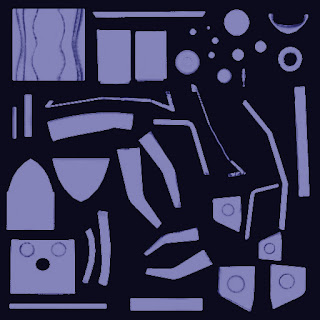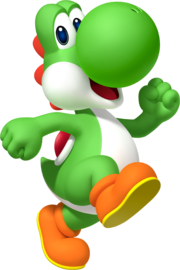So this week consisted of doing everything we did for Weeks 1-4 and applying them all in one week!
Here is my progress:
This is my low-res fish model I started with.
Next, I fitted all the UVs to the model.
From here I created a higher-res model to pull into ZBrush.
ZBrush is a great program! I really like playing in ZBrush! I am still not that amazing at it, and still need to learn a few tips and tricks, but I can easily spend time in it.
I don't have an accurate image of my ZBrush sculpting at this stage, but I do have an older one...
I noticed in this version I had some weird black shading going on with my normal maps that I went back and fixed.
After I sculpted, I decimated the model then I spent some time baking. It took me about 5-6 bakes to finally get a normal map I was okay with.
The AO map was a similar process. It took a few tries to get them the way I wanted them to look.
I also created a POS map as well as a specular map. There isn't too much to say about these maps since they are all pretty much trial and error.
I did want to make a future note for myself that these maps all get layered on top of each other after you create your color map.
After I finished baking out these maps, I sent the model into Mudbox. This is another great program where I love to put on headphones and go to town. I pulled up some color reference material and switched between coloring in Photoshop and coloring in Mudbox. I didn't use much texture variance here since it was a fish, but I did add some nice scale stencils.
Here is my colored fishie!
And my final rendered fishie:
Lastly, we need to always make sure the model looks good in whatever engine you use. Our engine of choice is UE4.
I really like how this turned out more than my model! I am super proud of this fish wayyy more so than my cannon.
Learn & Grow:
1. Understanding Mapping
I still have a hard time understanding where and when the maps get used. I understand the normal map, but are the AO and POS maps required for a model? My understanding is that it's mainly for aesthetics.
2. Decimate your model!
Somehow I missed this step with my cannon? It's not a big deal for these models since they are so .. "small".. but I did decimate my fish to try it. Its very nice to know also in ZBrush that decimating your model removes UVs! Speaking of...
3. ALIGN YOUR UVS!!
I ran into a newbie mistake with my UVs. I just left them in whatever shape or alignment they happened to fall in. This created way more headaches than I wanted it too. Not for my normal maps, but for my AO, Spec and POS maps.Next time, make sure that if you can, align your UVs how they would work on the fish. A specific example of this is for my POS map where I created a ramp gradient. One half of the fish was below the other half and the gradient made one side of the fish black, and the other side white. Awesome.
I was super nervous about making sure I followed each and every step correctly! I did have to ask a lot of questions and tips and tricks for certain programs, but I feel it turned out well, especially for cramming everything we learned over the past four weeks into one! Now, time to work on my RPP!
































